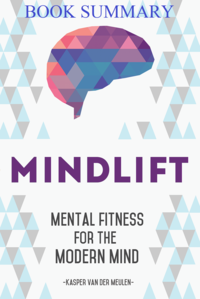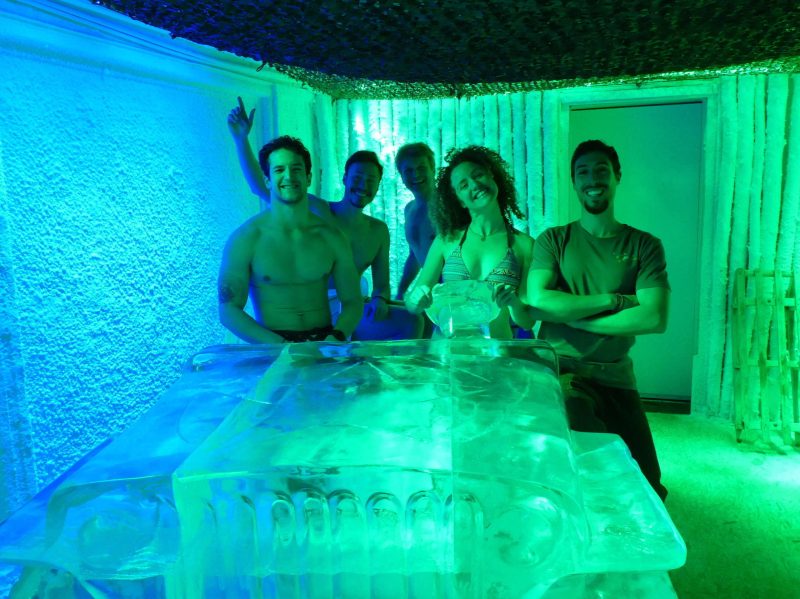
This book is about attention and how mental fitness allows us to take full responsibility of our lives in the modern world. The book is a practical guide on how to optimize our focus via skillful practice. The goal is to provide tools for personal freedom and to invest in ourselves.
The author learned what he explains in the book when he decided to turn his struggles into his strengths via the value of attention and the powerful resource we all own: our mind. Small adjustments in life can lead to gigantic results. Kasper introduced some mental exercises and physical practice in is daily life, coupled it with personal experimentation and scientific tracking and a re-birth happened.
Part 1: Theoretical principles on the modern mindThe brain becomes stronger, more efficient and smarter when challenged by new stimuli and experiences. It can be seen as a “muscle” that needs to be trained for better performance.
The brain can schematically be divided into:
the reptilian brain that is responsible for instincts, intuition and survival
the early mammalian brain that directs emotions and memory and deals with neurochemicals for temporary “super powers”
the modern brain, the neocortex that allows us to be conscious, to reason and be creative. It holds the “executive functions” that plan and control impulses. It works as a filter and ultimately is where it lies our ability to concentrate, ignore distractions and direct our attention.
But the brain was not built for a world where external stimuli are so abundant. Moreover between the three parts of the brain where to focus the attention between: survival needs (reptilian brain), fear and reward in autopilot (limbic system and mammalian brain) and the more rational thinking and decision making (frontal lobe) ? Our brain is optimally equipped to seek out new information, push towards pleasure, avoid pain/fear by realizing chemicals to prioritize survival, save energy and react via automated habits. So are we condemned?Attention is a valuable asset in life. We can see as it as our “mental currency”. With attention we can strengthen or weaken anything in life. It is important to consciously invest our attention on what is important and being more present.
The good news is that it can be trained: heightened awareness and active filtering and a mental muscle that focuses attention (see part 3 and 4). The first step is to control our unintentional thinking and over-worried “story telling” unconscious mind, the second step is to combine the power of child-like enthusiasm with a strategically planning adult developed mind. The goal is to made conscious choices, do something with complete focused awareness. Part 2: See things differentlyMental fitness is like physical fitness: practice, rest, support, analyze and repeat. Neural pathways become stronger and more efficient thanks to constant practice. The brain also changes at a physical level (neuroplasticity) when learning new things.
The power of habits lies in repetition: small daily improvements can lead to impressive long term results. Habit creation is possible when the “why” (mindset), the “how” (method) and “what” (means) are aligned. Only in this way the intelligent brain will have priority access over the autopilot, the emotional brain and the reward system.
The mindset determines the attitude or the way to look at life. The means and the method (described in part 3 and 4) are the tools to develop a strong mindset and therefore a habit.Part 3: Step-by-step method to self –developmentThe first step is awareness: realizing the space between stimulus and reaction, catching yourself and looking at it directly and consciously. In this lies the freedom of choice.
The author then proposes ten empowering mindsets for habit creation (that I personally renamed) as follows:
The growth mindset : above all effort. Developing rather than fixed innate abilities
Practicing for skills: develop skills over talent
Just do it: learn, know and apply. Motivation is a plus. Start small
Flow: right level between challenge and skills. Find circumstances for optimal focus
And if it was simple? No excuses, practice and apply micro-changes
Important or urgent? Investing in a habit gives freedom
5 minutes of pure attention: try leverage with the power of attention (20% – 80% rule)
Empowering positive actions: choose those thoughts to make that action
Inclusive thinking: pick and choose thanks to a love-based curiosity
From hard rises easy: do hard things and life will be easy
These way of thinking are the mindset, the why. Part 4: 50 tips for mental fitnessSo what about the how?
Start doing a data based analysis of yourself: quantify where you are at right now with your goal and habit. Then do appropriate researches, define what you need, apply, do and repeat for thirty days. Measure the progress on yourself, analyze. Kasper proposes some examples of things to measure, like steps count, sleep, heart rate, blood test, mental performance, mood, etc..
For the what, Kasper describes in the book 50 tips to work on the mental fitness divided into seven categories:
Attention management and productivity
Ability to learn and study at a rapid rate
Meditation and mindfulness practice
Dealing with stress
Re-wilding yourself
Movement and physical fitness
Optimizing nutrition and diet
For example I found in there the four most important exercises I use for my mental fitness: breathing, moving and high-intensity interval training, cold showers and intermittent fasting. I arrived there after one year of practicing the Wim Hof Method (Kasper does too) and related development studies and personal researches.
I have now enriched my exercises with a bunch of new ones, from rituals creation to fast learning and also mindfulness. Some of these exercises are inspiring for me, other are hard ones to implement. I better start sooner than later then. For 2018 I have selected some to go on multiple 30 days trials. I will do it with my partner Elise, to keep accountability during my thirty days practice. I will keep you all posted in my Youtube Channel. What about you?If you want to know more about the 50 tricks, tips and exercises that Kasper proposes in “Mindlift” I can certainly advise reading this book, it is worth the read.
Breathe and love,
Leo


